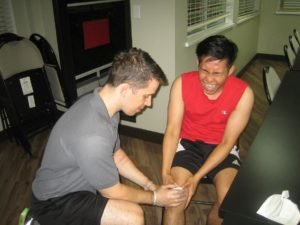An MCL injury can be categorized as mild or severe. The medial collateral ligament or MCL is positioned in the knee. Always bear in mind that the MCL is a usual site for injury among those who engage in sports especially high-impact or contact sports. The treatment options for a MCL injury tends to vary and there are certain precautions to take and always follow the instructions given by the doctor as the injury starts to heal.
Close look on an MCL injury
The medial collateral ligament is one of major knee ligaments that provide the knee with stability. This ligament also connects the knee to the femur and tibia and positioned on the interior of the knee.
A MCL injury might be a sprain, strain or a partial or complete tear of the ligament. The injury is usually triggered once the knee is forced inwards in an unnatural position. This causes too much tension on the ligament and it eventually stretches or tears. Certain sport such as soccer, football and hockey in which contact with the knee is common is likely to cause an injury.

Walking
The general rule when walking after an MCL injury is to use crutches until the individual can walk comfortably without limping. The doctor will provide the ideal recommendations such as a knee brace. This brace should be used during the initial weeks to provide support and stability to the knee joint.
Treatment for an MCL injury
An MCL injury can heal on its own within 1-6 weeks but the individual should undergo some physical therapy to restore the range of motion and regain strength in the affected knee. Anti-inflammatory medications and application of ice are suitable treatments to minimize the pain and swelling. If an individual ends up with a serious tear on the ligament, it would require surgery.
There are some athletes who endured a torn MCL with a popping sensation as the injury occurred. When rehabilitative exercises are performed or during the initial phases of placing weight on the joint again, it is vital to stop if pain is present and progress at a steady manner to avoid re-injury of the ligament.
